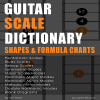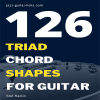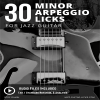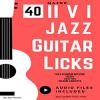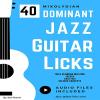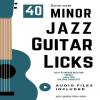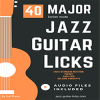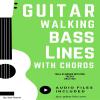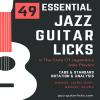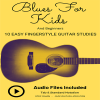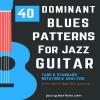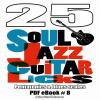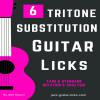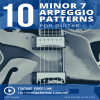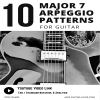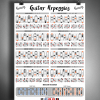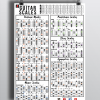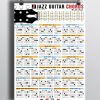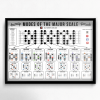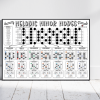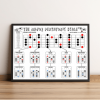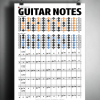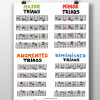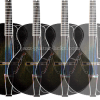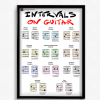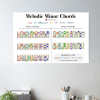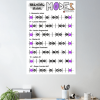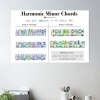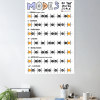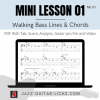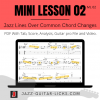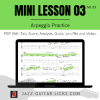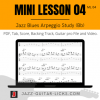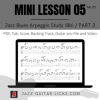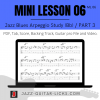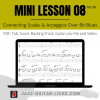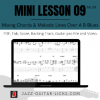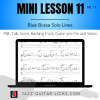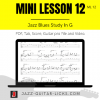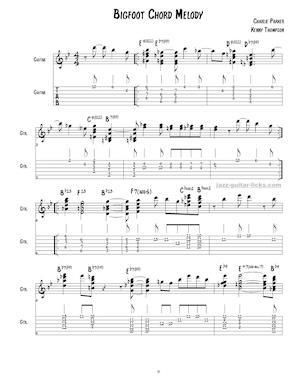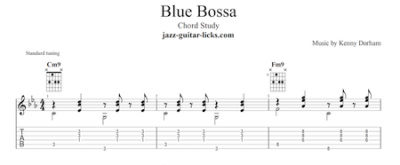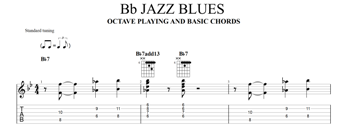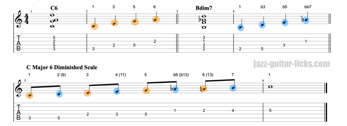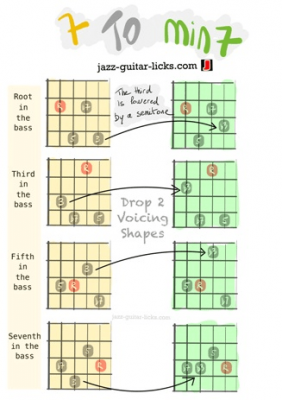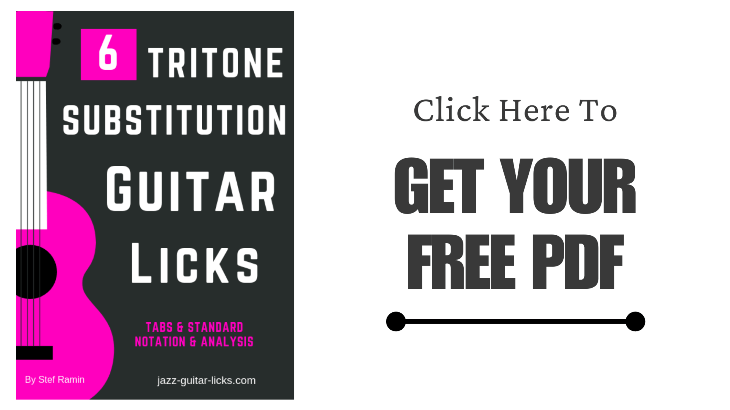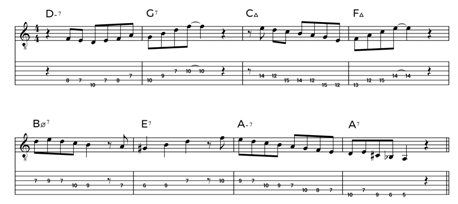
8 Steps to Learn Any Jazz Standard
- By jazz-guitar-licks
- On 2024-01-03
- In Jazz Guitar Lessons
- 0 comments
Guest Post By Jack Handyside at pickupmusic.com
Jazz standards are some of the most beautiful and interesting pieces of music ever written, but learning these complex songs and committing them to memory can feel overwhelming if you don’t know where to start.
Luckily for you, we’re here to help! This article will introduce you to a tried and true, eight-step method that you can use to learn any jazz standard. Our focus today will be on the classic jazz standard Autumn Leaves written by Joseph Kosma.
1 - Getting The Bass Notes Down
Think of the bass notes as the foundations of a house. If they’re rock solid in your mind, you can build anything that you like on top of it. The bass notes help to outline the order of chords that build the entire progression.
As is mostly the case with jazz standards, you’re likely to hear the bass moving in 4th intervals – through the II-V-I progression. If you can identify each of the chords as you’re building the bass line below them, you’re a step ahead of the game!
Our first exercise runs through the ‘A section’ of Autumn Leaves:
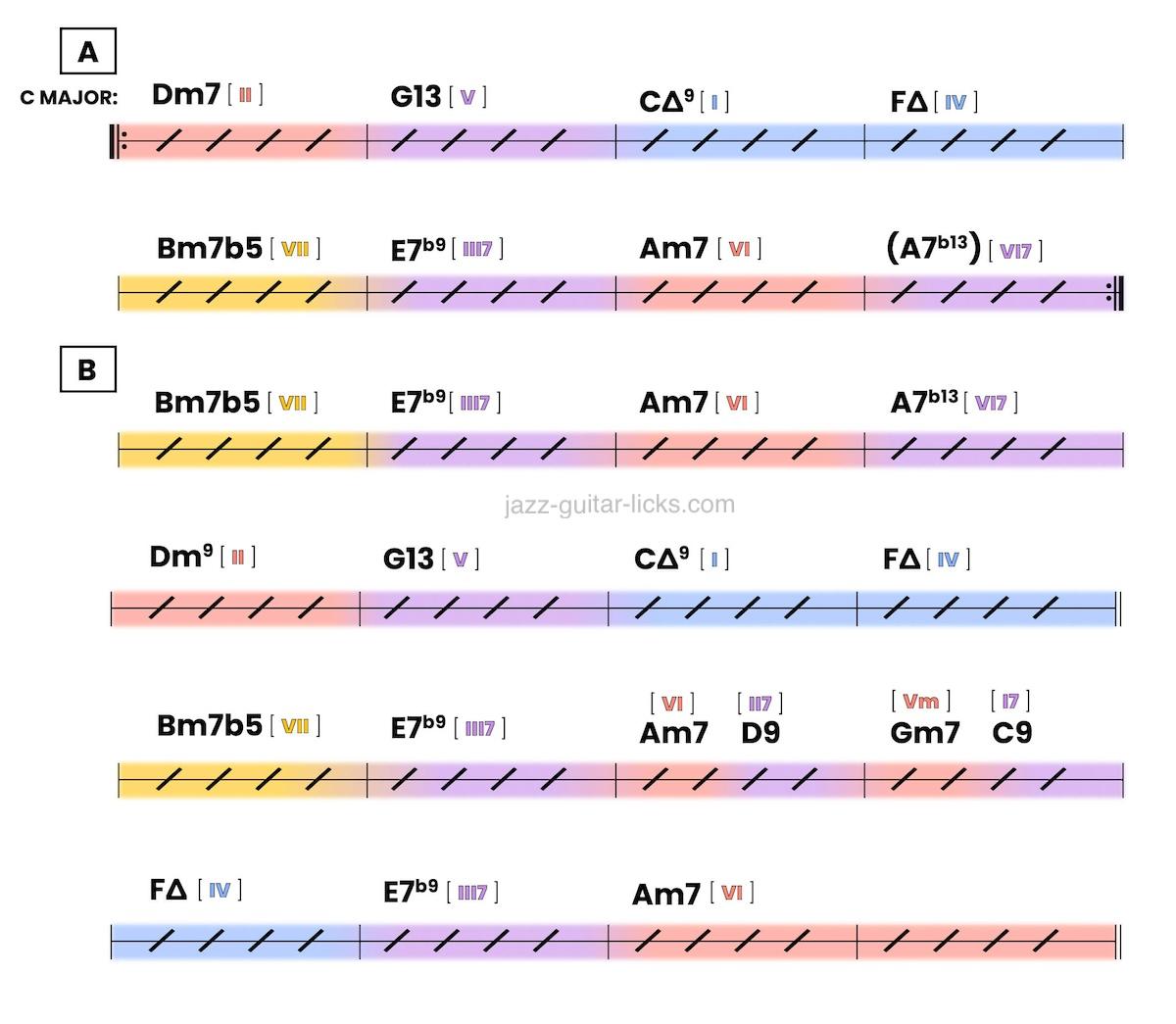
Developing the ability to hear how the bass notes are moving will answer a lot of questions later on about how to use and find the appropriate chords.
2 - Understanding The Chords
As we graduate from the school of bass notes to the university of chords, this is a good time to think about the good old days. Chords are one of the fundamentals that every jazz standard is built on.
Knowing the bass notes will allow you to build the chords on top, and choose which types of minor, major, or dominant chords you’d like to use. Using shell voicings instead of large, five- or six-note bar chords is usually easier on the hands and allows you to add color tones later on.
Let’s continue to work through the Autumn Leaves progression. Fortunately, this song uses two types of chord progressions:
- major II-V-I
- minor II-V-I
Want to learn how to swap out your big, clunky jazz chords for sleek and easy-to-play shell voicings? Look no further than this article on shell voicings.
3 - Memorizing The Melody
The melody is the most important thing to reference whenever you’re improvising. Each melody in a jazz standard is unique in its own way. Learning the melody in different parts of the fretboard will help you to feel more comfortable moving around.
This is super useful whenever you decide to include chords or harmonize the melody with 3rds or 6ths. Sing sing sing! Singing the melody is a bonafide way of helping you internalize the song and all of the crucial details necessary for improvisation.
For some, learning the words to the jazz standards can unlock a whole new level of familiarity with the song.
It’s also helpful to understand what the song is about so that you can decide to include small features and nuances in your performance that accentuate some of the themes heard in the lyrics.
Fun fact! Autumn Leaves features a falling melody in sequences. Sequences are like melodies that continually descend or ascend through the scale. Like ‘falling leaves’, the melody has been designed to ‘paint’ the words that are being sung.
Clever, huh?
4 - Building Scales
Scales can seem very daunting at first, but they’re a necessary evil that jazz guitarists need to overcome. Mastering them will allow you to build great melodies and solos across the fretboard.
Luckily, jazz guitarists like to recycle the same kinds of scales. It’s very likely that you’ll have used some of these scales before - even by accident! The major scale is the most useful and important scale that you could know – many of the modes discussed in Cecil’s video stem from the major scale.
It might take some time, but learning your scales in all positions and shapes is immeasurably useful when improvising and exploring new ideas. C Ionian (the major scale), D Dorian, and G Mixolydian are three of the most commonly used scales to play over a major II-V-I progression.
B Locrian, E Phrygian dominant, and the E altered scale are the scales most commonly used when dealing with minor II-V-I chord progressions.
Want to know more about jazz scales? This must-know jazz scales article is a useful tool to help you get started.
5 - Constructing Arpeggios
Arpeggios are a neat way of getting through a song’s chord progression without having to play every scale related to each chord. Think of them as concise, time-saving tools that you can use to outline the chords.
Arpeggios involve playing the root, 3rd, 5th, and 7th of a chord one at a time. Arpeggiating a chord or triad is known as playing a ‘broken chord’. Arpeggios can be used to highlight more interesting chords like 9th, 11th, and 13th chords.
Want a more interesting ‘color’ over your dominant or minor chord? Try superimposing some tasty arpeggios over them. This is a more advanced technique to be tried only when you’re comfortable with the basic 7th arpeggios.
Here’s how the arpeggios for Autumn Leaves look:
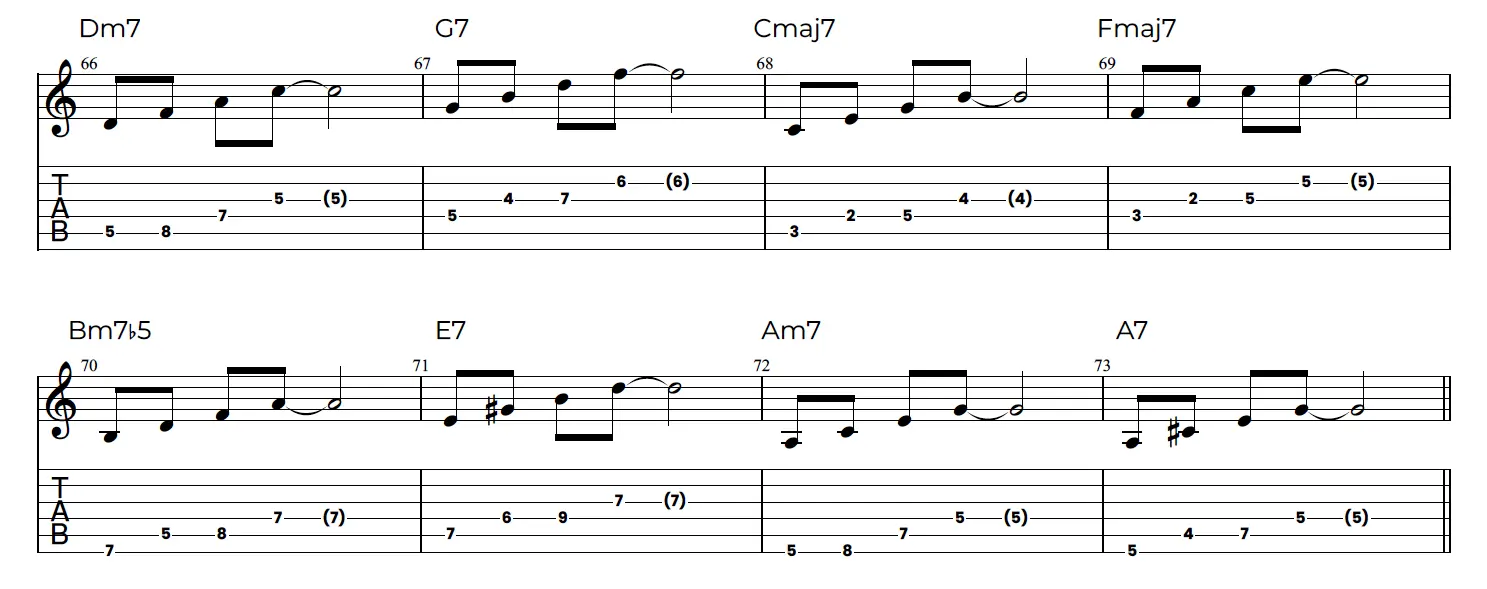
Arpeggios come in all shapes and sizes. The guitar fretboard can be home to lots of different arpeggio shapes that outline the same chords. It’s important to practice different shapes and find out which ones feel most natural to you.
6 - Crafting Licks
Whenever you’re improvising your way through a jazz standard, it’s useful to have a collection of licks to copy and paste over chord changes without having to think up new melodic material every single time.
Even the jazz guitar greats had a series of recycled licks that they would use every now and then to help them out of a tight jam… literally! Making sure that you have a set of major and minor II-V licks can be a practical tool to that you use to move between different ideas.
Licks can be pre-designed melodies that you can ‘plan’ into the chord progression. Grant Green was a big fan of this and often had a set of bluesy II-V licks that he would add variations to.
Learning other players’ licks can give insight into their style, and teach you new, interesting concepts. Cecil has prepared some tasty licks to expand your bag of tricks, check it out :
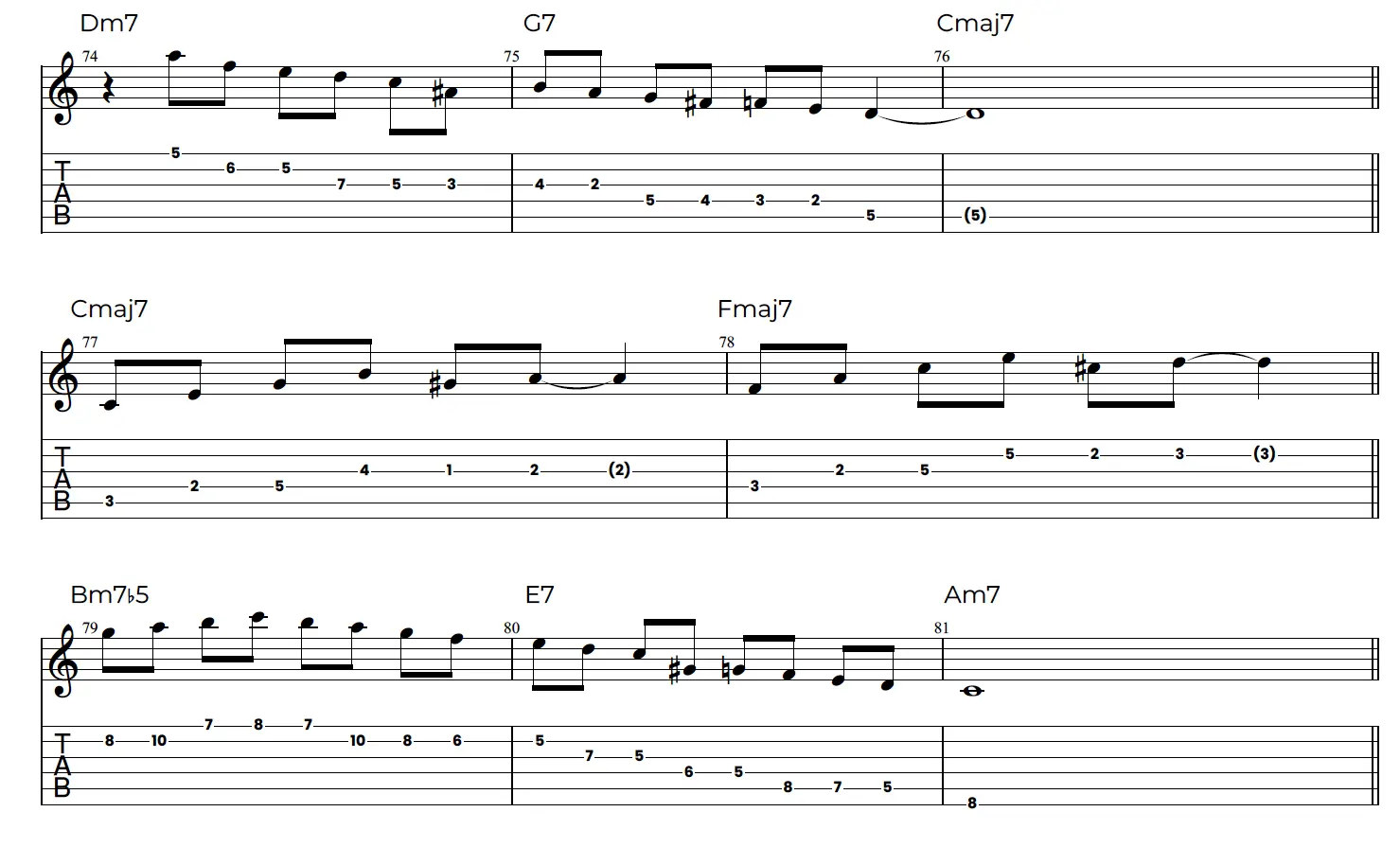
Having fun? There are plenty more awesome licks and jazz guitar content available over in Pickup Music’s Jazz Learning Pathway.
7 - Learning An Etude
No need to hit the books. Cecil has an excellent solo for you to study that uses all the previous fundamentals. This is where all your time spent with bass notes, licks, chords, and scales comes together.
An etude is a short ‘study’ of a written solo or concept. Etudes can teach you how to ‘think’ like a more advanced player – it’s like taking a walk in a pair of Joe Pass’ shoes!
The etude that Cecil has prepared for you will test your knowledge and your information recall of the previous six skills. Take your time with this one:
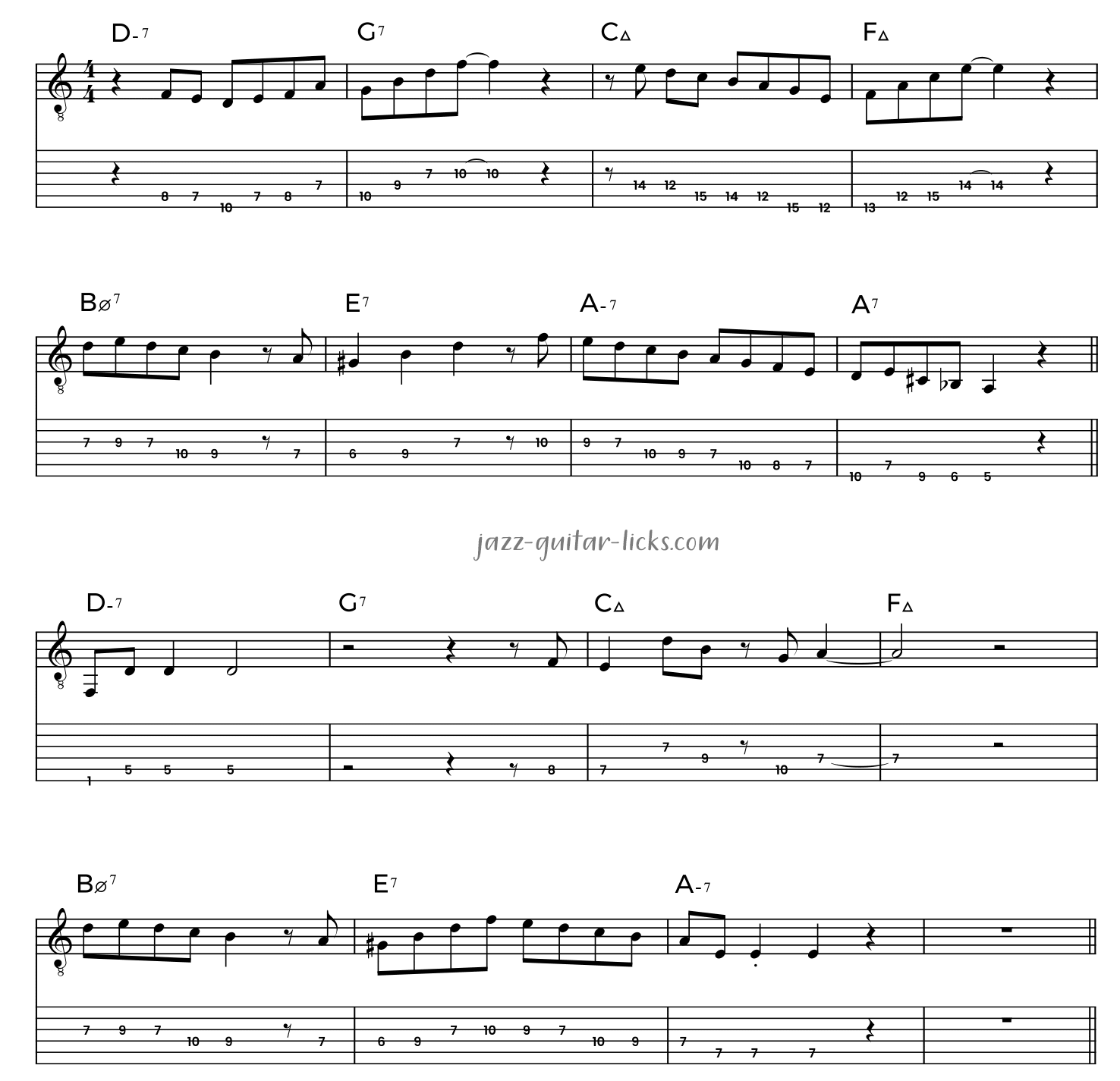
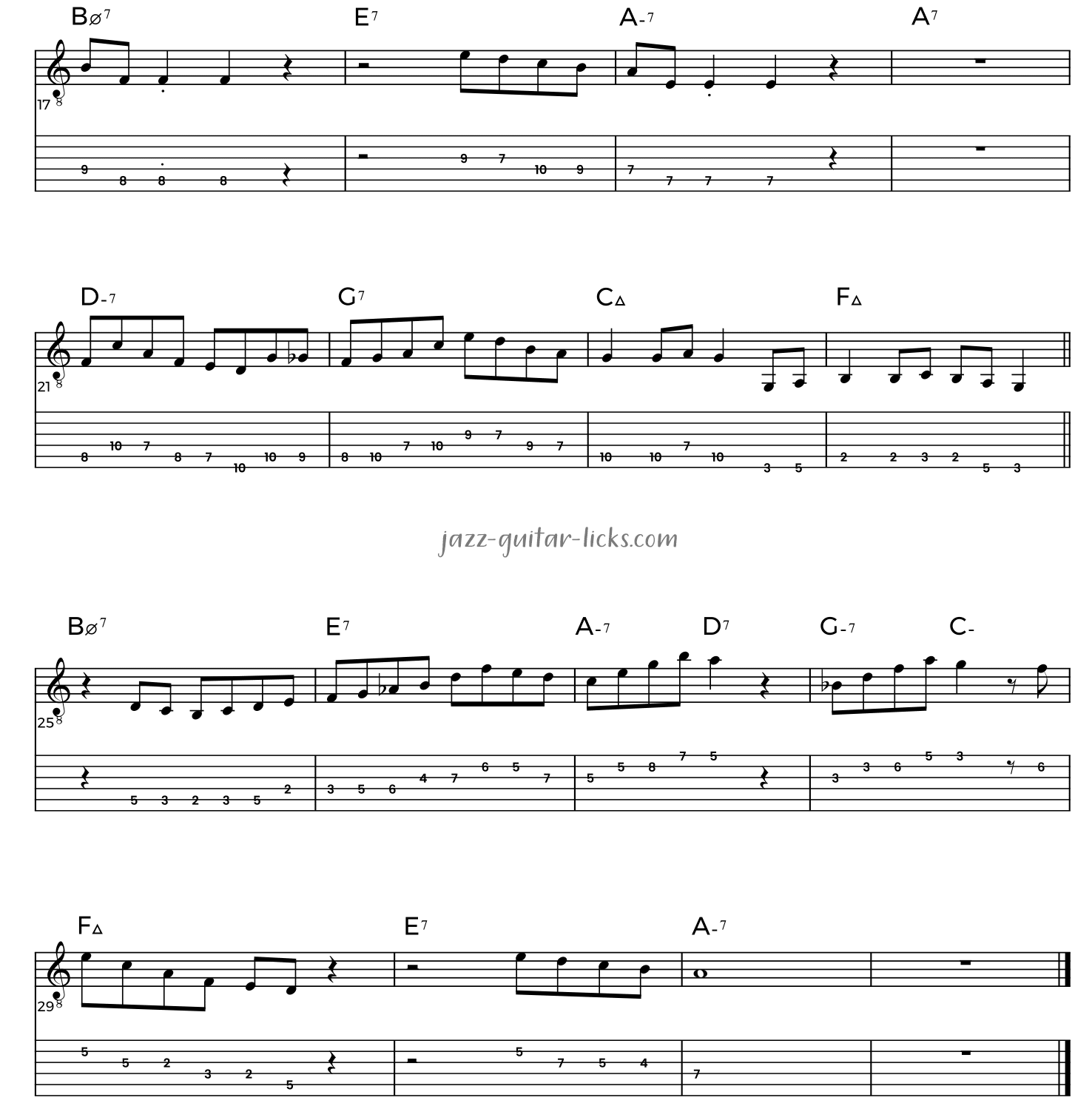
8 - Improvising Over The Song
Improvisation is an important part of mastering jazz standards. When you can freely improvise over a standard, you’re utilizing all of the previous seven skills at once. Pretty neat, huh?
Don’t beat yourself up if you’re finding it difficult to juggle all seven skills at once.
Improvising fluidly takes patience and practice. Over time, you’ll notice you can let go of the mental juggling and focus more on creating a good melody. This is when you’ll know things are really starting to sink in.
Bonus Tips
Now that you’ve been through all eight steps, you might feel that there’s nothing left to learn – which is where these special bonus tips come in!
Once you’ve applied the 8-step method, most professional jazz musicians would advise that you continue digging into the same jazz standard and apply the following tips:
- Listen to different versions of the same jazz standard to help you hear how other musicians have approached it – you also might even find performances that you prefer.
- Play with people! The only way to truly test if you’ve committed the song to memory is to play it with other musicians.
- Transcribe other guitarists to learn how they’ve approached the song and how they formed their improvisational ideas over the same chord progression.
- Find musicians who are better than you. This can feel daunting at first, but at one point, all the jazz guitar legends of the past had to learn by jamming with more advanced players.
- Sing everything you play to help you internalize the melody, bass movements, and ideas that you could use for soloing over the chord progression.
Although these bonus tips are a lot more conceptual, they’re excellent pieces of advice for any guitarists looking to test their skills at a jam session or form a band of their own.
Conclusion
Congratulations on getting through all the steps – the method is now yours! There is a common saying in the jazz world when you learn your first few standards:
“The hardest jazz standard that you’ll learn is the first one. The second hardest is the one after that”.
The idea is that the more time you spend practicing the same methods, the quicker your skillset will develop. Over time, you’ll become more confident in identifying how the chords work, where the melody lives, and the appropriate scales to use over the progression.
Playing jazz guitar is very much a way of life – even the best jazz musicians are always sharpening their skills, learning new songs, and perfecting the fundamentals.
-
Guitar Chord Dictionary
This PDF eBook provides over 550 guitar chord shapes. This is the perfect reference guide to understand how chords are built and how to play them on the guitar neck. -
Guitar Scale Dictionary
This E-book is a printable PDF method including over 700 scale diagrams and formula charts for guitarists. -
Harmonized Scales For Guitar
Complete guitar PDF on harmonized scales: major, minor, harmonic and melodic. Includes chord and arpeggio diagrams, charts and practical tabs. -
172 Arpeggio Shapes For Guitar
This printable PDF is a method dedicated to guitarists of all styles who want to learn build and play the most important types of arpeggios. -
126 Triad Chord Shapes
This handbook for guitar players is intended both for teachers and students. It includes 126 guitar shapes for mastering triads. -
Harmonic Major Scale Chords
this PDF offers diagrams and tabs for guitar to learn the chords of the harmonic major scale. -
Major Scale Harmonization
This package provides a printable PDF with exercises and audio files to learn how to harmonize the major scale with 3 note chords and their extensions. -
30 Minor Arpeggio Licks
This package includes a printable PDF method containing 30 exercises with tabs, staves and audio files for practicing minor arpeggios on guitar. -
II V I Bundle - 170 Exercises
This bundle contains 4 PDF methods for a total of 170 exercises with tabs, staves, analysis & audio files for practicing scales, arpeggios licks & chords over the 2-5-1 progression. -
Diatonic Licks Bundle
This package contains 120 jazz guitar lines based on diatonic modes as Mixolydian, Dorian and Ionian. PDF format with tabs, audio files and analysis. -
30 Groovy Jazz Guitar Licks
This downloadable package contains a PDF WITH audio files giving access to 30 groovy guitar phrases mixing jazz, blues and funky licks for beginners. -
30 Smooth Jazz Guitar Licks
In this package you'll get a printable PDF Method with tabs, notation, analysis, scale shapes and audio files for practicing 30 smooth jazz guitar licks. -
40 II V I Jazz Guitar Licks
This pdf method for guitar contains fourteen 2 5 1 jazz guitar lines with tab, standard notation, analysis, scale charts and audio files. -
50 II-V-I voicings
This printable PDF guitar method provides 50 exercises with audio files, analysis, tab and staves for learning major 2-5-1 chord voicings. -
40 Minor 2 5 1 Chord Voicings
This PDF method contains 40 exercices with tabs, scores and audio files for practicing jazz guitar chords over the minor 2 5 1 progression. -
40 Minor II V I Licks
This guitar method is a printable PDF with tabs, diagrams, theory and audio files providing 40 minor 2 5 1 jazz patterns. -
40 Mixolydian Jazz Guitar Lick
PDF guitar method with tabs, audio files and theory providing 40 dominant jazz guitar lines for teachers and students. -
40 Minor Jazz Guitar Licks
This printable guitar method in PDF format contains 40 easy minor jazz guitar lines based on the Dorian mode. -
40 Major Jazz Guitar Licks
Printable PDF eBook method containing 40 major jazz guitar licks with tab, standard notation and audio files for beginners and intermediates. -
Guitar Walking Bass Lines
This jazz guitar method about walking bass lines and chords is available as a PDF files containing 35 exercises with tabs, analysis and audio files -
101 Dominant Arpeggio Patterns
This printable PDF method provides 101 dominant arpeggio exercises with tab, theory and standard notation for the jazz, blues and rock guitarist. -
49 Essential Jazz Lines
This printable eBook method in PDF format provides 49 jazz solo transcriptions of the greatest jazz musicians. Tab, standard notation, audio files & analysis. -
11 Jazz Blues Studies
11 jazz blues chord studies with tabs, standard notation, analysis, and audio recordings and PDF. -
10 Easy Fingerstyle Blues
This PDF with Tabs and audio files provides 10 easy acoustic fingerstyle blues guitar studies for kids and beginners. -
25 Altered Jazz Guitar Lines
This PDF eBook method contains 25 altered jazz guitar licks with tabs, patterns, scale charts and audio files to master, apply and develop the altered scale. -
40 Blues Dominant Patterns
This printable method is available as a PDF file containing 40 easy dominant jazz-blues guitar lines with tabs, standard notation, analysis, audio files and scale charts. -
25 Pentatonic Licks
This jazz guitar method is an eBook available as a PDF with standard notation, guitar tabs, diagrams, analysis, audio files and backing tracks. You will find in this booklet 25 easy jazz guitar lines with theory using common and rare pentatonic scales. -
25 Soul Jazz Guitar Licks
You will find here an eBook available in PDF containing 25 soul jazz and hard bop guitar licks in the style of Grant Green, Melvin Sparks, George Benson. -
25 Diminished Patterns
This eBook PDF with audio files contains 25 dominant diminished jazz guitar patterns using the half-whole diminished scale and diminished 7th arpeggios. -
6 Tritone substitution licks
This Printable PDF eBook available for free download contains 6 easy jazz guitar licks with tabs/notation, youtube video link and analysis about the tritone substitution. -
10 Minor 7 Arpeggio Patterns
This printable PDF eBook offers 10 easy minor 7 arpeggio patterns with its related YouTube video for beginner guitarists. -
10 Easy Major 7 Arpeggio Licks
This is a printable PDF for beginner jazz guitar players providing 10 easy licks to practice major 7 arpeggios. -
10 Chord Melody Lines
Within this package, you'll discover a set of ten chord melody exercises for beginners. Printable PDFaudio files, a backing track, and a link to the associated YouTube video. -
10 Minor Blues Scale Licks
You'll find here a PDF with 10 easy jazz guitar licks to practice the minor blues scale on guitar.
-
Guitar Arpeggios Poster
This giant guitar poster for any guitar player, student or instructor contains colorful arpeggio diagrams. Giant size 24 x 36 inches (60 x 90 cm). -
Guitar Scales Poster 24*36
Guitar posters and wall art with eighteen neck diagrams representing the most used scales in music. -
Guitar Chord Poster
This printed color posters contains 63 guitar chord diagrams for jazz players, students, teachers and schools. -
Guitar Modes Poster
Guitar reference posters and wall art about modes of the major scale for guitar teachers, students and music schools. -
Melodic Minor Modes Poster
Educative and decorative giant guitar poster with neck diagrams, interval names about the seven modes of the melodic minor scale. -
Pentatonic Scale Guitar Poster
This guitar reference poster shows the positions and intervals of the major pentatonic scale. -
Guitar Notes Poster
This is a giant poster showing the notes on the guitar fret board and their positions on a musical staff. -
Triads Guitar Poster
This reference poster show the positions and intervals of the main triads used on guitar. This is a useful tool for guitarists, teacher and students. -
Four Archtop Guitars Poster
This is a decorative poster with four archtop jazz guitars. Several size and colors in landscape format available on Teespring and redbubble. -
Intervals On Guitar - Poster
This giant poster for guitar provides neck diagrams with interval positions. -
Melodic Minor Modes
This music theory poster available in several sizes shows the construction of the seven modes of the melodic minor scale. -
Major Scale Chords
This handy poster provides a clear visual guide to the chords built from the major scale, helping you recognize patterns and improve your playing. -
Melodic Minor Chords
Explore the rich harmonic possibilities of the melodic minor scale with this essential guitar poster. -
Harmonic Minor Modes
This music theory poster, offered in various sizes, demonstrates the structure of the seven modes of the melodic minor scale. -
Harmonic Minor Chords
Discover the chords of the harmonic minor scale with this guitar poster. -
Major Scale Modes
This poster is created for music teachers and students, illustrating the structure of the seven modes of the major scale.
-
Mini Lesson 01 (ML 01)
You'll find a mini guitar lesson about walking bass lines and chords containing a PDF with tab, score analysis, shapes, a video and a guitar pro file. -
Mini Lesson 02 (ML 02)
In this mini jazz guitar lesson you will learn how to play easy and cool jazz lines over basic chord changes found in jazz. Pdf, tab and video included. -
Mini Lesson 03 (ML 03)
With this short lesson you will learn how to play and connect basic guitar arpeggios over a diatonic chord progression. -
Mini Lesson 04 (ML 04)
This is a downloadable package with PDF, Tab, guitar pro file and video to practice guitar arpeggios over a jazz blues chord progression. -
Mini Lesson 05 (ML 05)
This downloadable package provides a PDF with Tab/score, a guitar pro file and a short video for practicing guitar arpeggios on a jazz blues progression in Bb. -
Mini Lesson 06 (ML 06)
This package for guitarists contains a PDF with tab, video, backing track and guitar pro file for practicing arpeggios over a basic jazz blues progression. -
Mini Lesson 07 (ML 07)
With this mini guitar lesson you will learn how to superimpose arpeggios over a diatonic chord progression. Video, pdf, jamtrack and guitar pro file included. -
Mini Lesson 08 (ML08)
Mini lesson with PDF, guitar pro file, video and backing track for practicing scale and arpeggio connections over a Bb jazz blues progression. -
Mini Lesson 09 (ML09)
This mini lesson is a downloadable package containing a PDF, video, backing track and guitar pro file of a jazz blues progression study in B. -
Mini Lesson 10 (ML 10)
This mini guitar lesson provides a printable PDF with tab/notation, video, backing track and guitar pro file for practicing open triads over Fly Me To The Moon. -
Mini Lesson 11 (ML 11)
This guitar lesson is a package inlcuding a PDF transcription with analysis, a short video, a backing track and a guitar pro file to learn to play jazz solo lines over Blue Bossa. -
Jazz Blues Guitar Study (ML12)
This mini lesson provides a video, a guitar pro file and PDF transcription of a jazz blues study in G implying melodic lines, chord extensions and substitutions
jazz guitar chords Guest post creator spotlight jazz guitar etude Autumn leaves
Add a comment

